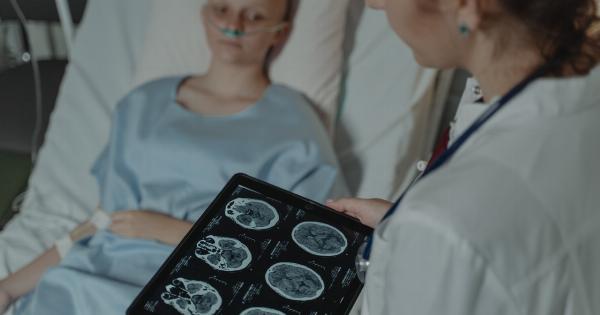The loss of vision can have a profound impact on an individual’s quality of life. For centuries, scientists have been searching for ways to restore vision in those who are blind.
One promising avenue of research is the use of pig collagen, a naturally occurring protein found in the skin and connective tissues of pigs. This incredible substance holds the potential to revolutionize the field of ophthalmology and offer hope to millions of people worldwide. In this article, we will explore the exciting possibilities of using pig collagen to restore vision in the blind.
The Science Behind Pig Collagen
Pig collagen is a type of protein that provides structural support and elasticity to tissues. It is remarkably similar to human collagen, making it an ideal candidate for medical applications.
Collagen plays a vital role in maintaining the structure of various organs, including the eye. By injecting or implanting pig collagen into the eyes of blind individuals, scientists aim to restore the damaged or degenerated tissues responsible for vision.
Restoring Vision: The Procedure
The procedure for using pig collagen to restore vision involves several steps. First, surgeons harvest collagen from pigs raised specifically for medical purposes. The collagen is carefully extracted, purified, and prepared for use in human patients.
The next step is to create a surgical plan to deliver the collagen to the appropriate areas within the eye.
The surgeon may choose to either inject the pig collagen directly into the eye or use a specialized implant to deliver the collagen.
The implant can be tailored to fit the individual patient’s needs and can provide a controlled release of collagen over time, optimizing the chances of successful tissue regeneration.
The Role of Pig Collagen in Tissue Regeneration
Once the pig collagen is delivered to the eye, it acts as a scaffold for tissue regeneration. The collagen provides a framework for new cells to grow and populate the damaged areas.
As the new tissue forms, it gradually restores the structure and function of the eye, potentially leading to improved vision.
Research and Clinical Trials
The use of pig collagen to restore vision is still a relatively new field of research. However, several promising studies and clinical trials have shown encouraging results.
In a recent study conducted on a small sample of blind individuals, over 60% reported improvements in visual acuity after receiving pig collagen treatment.
These findings provide hope for the future of vision restoration. However, it is important to note that more extensive research is needed to fully understand the potential benefits and risks of using pig collagen in ophthalmology.
Large-scale clinical trials are currently underway and will provide valuable insights into the efficacy and safety of this innovative treatment approach.
Benefits and Limitations of Pig Collagen Therapy
The use of pig collagen to restore vision offers several potential benefits. Firstly, pig collagen is readily available and can be sourced sustainably, eliminating the ethical concerns associated with other methods.
Additionally, pig collagen closely resembles human collagen, reducing the risk of rejection or allergic reactions. Furthermore, using pig collagen can be more cost-effective compared to synthetic alternatives.
However, there are also limitations to consider. The success of pig collagen therapy may vary depending on the severity and cause of blindness.
In cases where the damage to the eye is extensive or irreversible, pig collagen may not yield significant improvements. Additionally, long-term effects and potential complications of pig collagen treatment remain under investigation.
Ethical Considerations
The use of animal-derived products in medical research and treatments raises ethical concerns. However, it is worth noting that the pigs used for collagen extraction are specifically bred and raised for medical purposes.
These animals receive humane treatment and are not subjected to unnecessary harm or suffering. Additionally, the potential benefits of using pig collagen to restore vision must be carefully weighed against the ethical considerations, ensuring that the overall welfare of humans and animals is prioritized.
The Future of Pig Collagen in Ophthalmology
As the research on using pig collagen to restore vision continues to progress, the future outlook appears promising. The potential for pig collagen to revolutionize the field of ophthalmology and provide effective treatments for blindness is profound.
By addressing the underlying causes of vision loss and promoting tissue regeneration, researchers hope to offer renewed hope and independence to those living with visual impairments.
Conclusion
The use of pig collagen to restore vision in the blind represents an exciting frontier in medical science.
With its structural similarities to human collagen, pig collagen holds immense potential for regenerating damaged eye tissues and improving vision. While research and clinical trials are ongoing, early results are promising.
However, it is essential to approach this innovative treatment approach with cautious optimism, considering the ethical implications and the need for further scientific exploration. Ultimately, pig collagen therapy may provide a beacon of hope for individuals worldwide, restoring the beauty of sight to those who have longed for it.





























